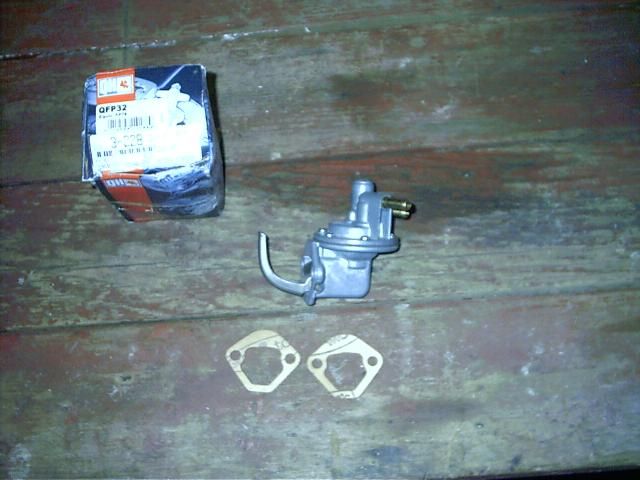SIGH!!!
My friend in Scotland, as to the photos, we have several 'Sticky' threads dealing with how to post a photo. Please visit Photobucket.com and jump thru their hoops. Do observe that when the photo is copied to your post, it is necessary to delete much of the photo verbiage to get the photo the right size for this forum. It takes a bit of trial & error along with the use of colorful technical language, much like the Sergeant Major uses when trying to decipher what the F---ing Colonel wants, to use an old GI expression.
As to the electric fuel pump, yes, it needs to be located under and next to the fuel tank. I have posted an article on this chore several years ago along with detailed photos showing the deed. This way, you can run the gas tank level on down to empty if you want. But, as our friend Hasbeen says, the engine bay pump is easy to access. I fretted over this issue as well until I bit the bullet and put it where it truly belongs.
Now on to the mechanical fuel pump.

This is the 'long' arm fuel pump. As you can see, it is a QH product, part # QFP32. It is made in Italy and is distinguished by the screws securing the top to the base. Also, note the actuating arm fulcrum pin that can be pressed out and the short arm fitted, provided you have a junk QH short arm pump available.
I have had this new pump in my spare parts inventory for 10 years. Back then it cost $22.95US. It has an expected service life of about 2 years and then the internal O-ring seal deteriorates allowing crankcase pressure to leak out the vent hole in the bowl of the pump. The fulcrum pin works itself loose and finally falls out on the side of the road about 500 yards from where the engine stalls. And, about this time the alcohol in the gasoline has reduced the pump diaphragm to a jelly wafer that won't keep up the pressure to pass the gas.
Two years is all you get. Now, my friends, do you understand why I quit the struggle and went the electric pump route?
Mildred Hargis


